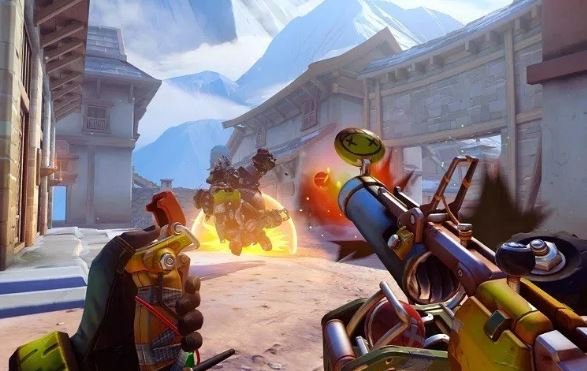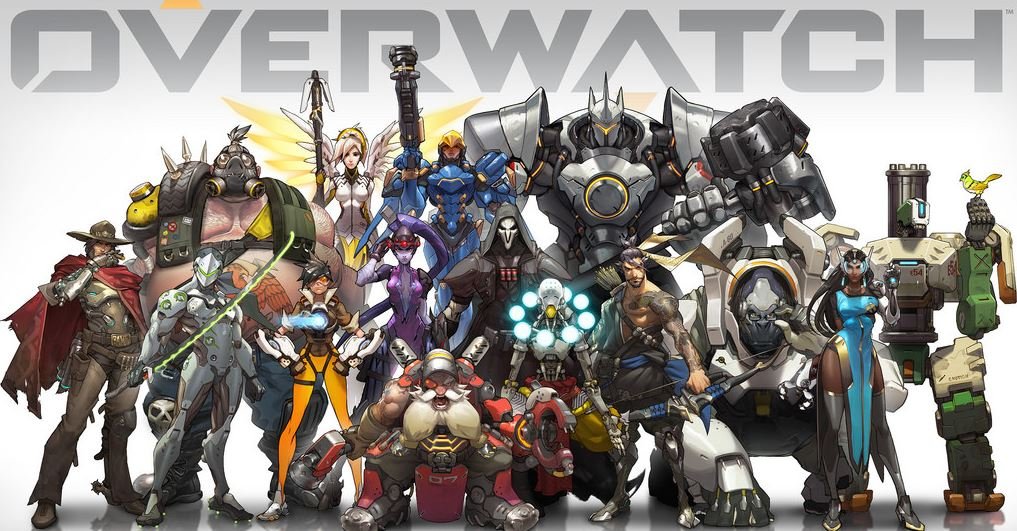Overwatch is the latest game from Blizzard, which is one of the most famous game developers, especially notable for developing World of Warcraft. Unlike most of Blizzard’s games, which tend toward strategy or RPG-style gameplay, Overwatch is a competitive first person shooter.

However, like most of Blizzard’s games, Overwatch comes with enough fresh twists on the genre to keep it interesting and exciting, making it one of the fastest growing eSports games today.
The thing that makes Overwatch stand out most amongst other first person shooter games is its cast of characters. Similar to a MOBA like DotA 2 or League of Legends, Overwatch’s mechanics change drastically depending on the heroes being played.
Play as Reinhardt, and you will spend a lot of your time shielding other heroes with your huge energy shield, with occasional breaks to get up close and personal to clobber an out of position hero with your huge hammer.
Play as Widowmaker, on the other hand, and you may as well be playing a different game, focusing on sitting on the sidelines lining up the perfect long distance instant kill head shot before grappling away to a safe distance.
This hero system is at the core of Overwatch’s gameplay. Players each choose a different hero to start the game as, and fight as a team of six against an opposing six heroes.
However, unlike most games of this style, a player who finds their hero ineffective against the enemy team composition can switch to another hero at their base, letting teams try different strategies against each other as the game moves on.
Maybe the opposing team’s shields are making it impossible to get a shot in, so a Widowmaker switches to an imprecise but high damage hero like Junkrat to blast through them.
Maybe a Bastion is set up at a choke point, so a Soldier 76 goes Genji for the ability to reflect his own bullets back at him.
While the game is strategic enough in the normal Quick Play mode, Blizzard has also made a Competitive mode for players who wish to take their game to the next level. Competitive mode makes a number of changes to the Quick Play formula to make for a more structured and skill-based game.
While Quick Play is optimized for low pressure matches that players can enter and leave at will, Competitive play asks more of players. When you queue for a competitive match, the game attempts to match you into and against teams of similarly skilled players based on the Skill Rank, or SR, of each player.
SR is awarded or lost at the end of each competitive match, making it a number that constantly updates based on the performance of each player.
Once a match has been found, any players leaving the match early will be penalized by an automatic SR loss as well as a temporary time out from queuing for a match. Serial leavers eventually will be banned from competitive altogether! This is to ensure that matches are not ruined by players who give up halfway through a match.
While Quick Play games are fluid, with players often leaving when they feel a game is over and being replaced with new players, a Competitive game has two set teams that will not change over the course of the match, even if a player leaves.
Competitive games are also changed in other ways. In Quick Play, there are several maps that are played asymmetrically. One team will be assigned to defend the objective from the attacking team.
The game ends either when the attacking team accomplishes their goal, or when the attackers run out of time, resulting in a defensive win. However, in Competitive, this is done a little differently.
Instead of giving one team the role of offense and the other of defense, which depending on the map can be an advantage one way or the other, Competitive matches effectively last for two Quick Play matches of the map. After one team has either succeeded or failed at attacking the objective, the other team gets a chance to try attacking.
Winners in this mode are determined by the team that manages to either hold the enemy off for longer or complete the objective faster. That way, the game isn’t over as soon as the attackers take the objective or run out of time! It ends up being a competition, giving the losing team of the first half a chance to fight back.

Because of the high stakes, the atmosphere among players in a competitive match is usually much different than that in a Quick Play game. While in Quick Play, players are often trying out new heroes, not communicating with their team, and generally messing around, Competitive matches tend to be more serious.
Teams will communicate about team composition and be more quick to call out enemy positions and strategy changes that might affect their team. Competitive players are also much more likely to change to a different hero when things are going poorly for them.
As players rank up and gain more SR in Competitive games, their rank increases. Ranks range from Bronze to Grand Master, with increasing SR requirements for each rank. Players are Bronze all the way until 1500 SR, which is when Silver starts.
Silver is from 1500-1999, followed by Gold at 2000-2499, then Platinum at 2500-2999, Diamond at 3000-3499, Master at 3500-3999, and Grandmaster at 4000 and above. Additionally, each region (North America, Europe, etc.) has a top 500 rank range, reserved for the top 500 players by SR in that region. The majority of players fall into Gold or Platinum, with 32% of players in Gold and 25% in platinum.
Silver is a close third, with 21% of players, while diamond has only 10% of players. Bronze, Master, and Grandmaster contain only 12% of players between them, with the majority of those in Bronze.
Overwatch Competitive mode is one of the most strategically interesting FPS experiences available. There is a good reason that Overwatch is one of the top growing www.rivalry.gg eSports games out there! If you are interested in Overwatch, consider watching the Overwatch League games to see the action for yourself.